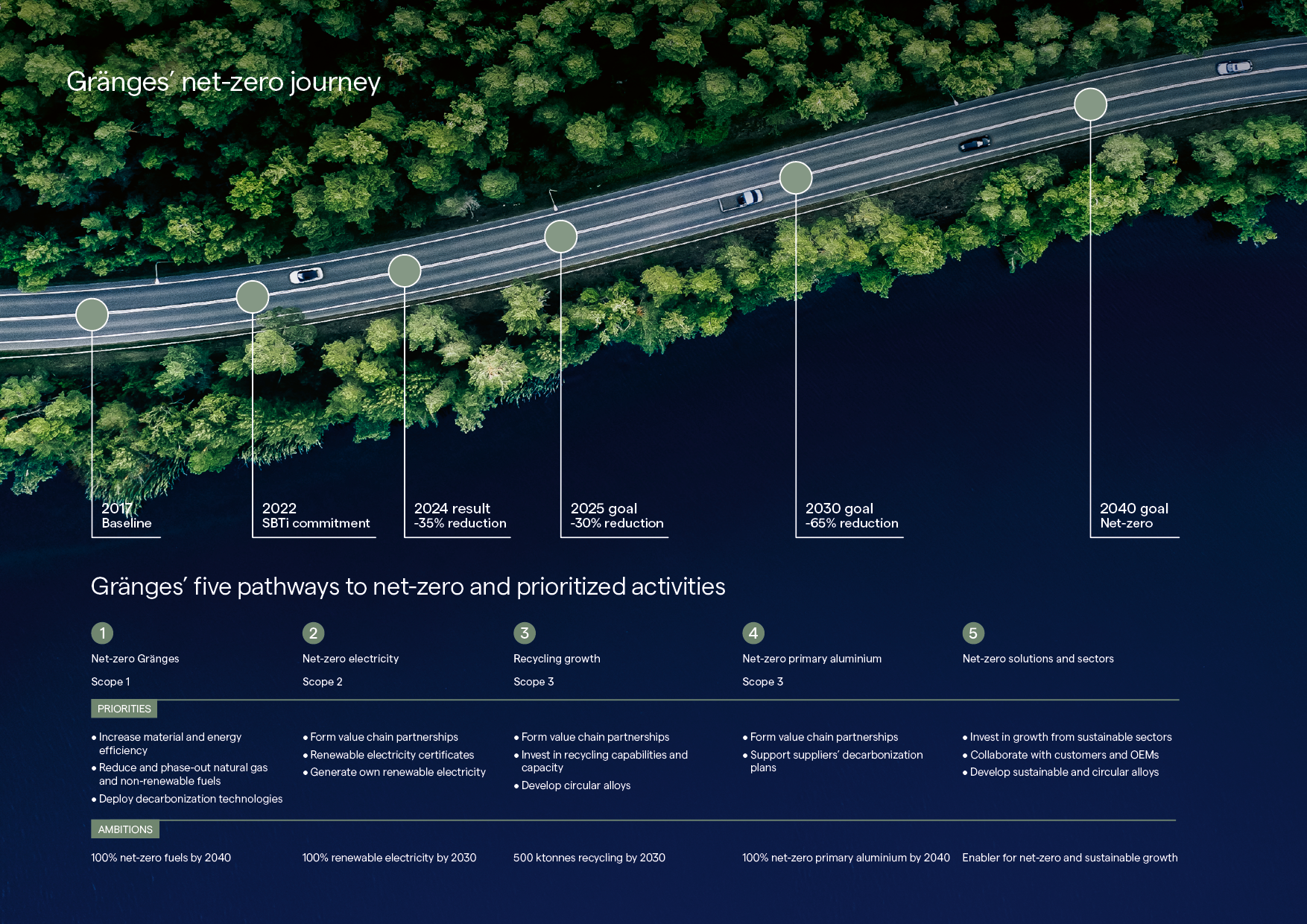Net-zero plan
Gränges is committed to mitigating climate change and has set a goal to reach net-zero by 2040. The company strives to reduce the climate impact along the value chain – from its own operations and from the materials sourced. The main pathways to reach net-zero include recycling growth, low-carbon primary aluminium sourcing, and renewable energy usage.
Aluminium – an enabler for decarbonization
The aluminium industry is considered a harder-to-abate industry and is responsible for about two percent of the world’s direct industrial carbon emissions. The metal is widely used in different product segments and direct emissions are expected to grow due to an estimated increased demand of the metal. Aluminium also has a positive contribution to a sustainable and circular economy because of its light weight and infinite recyclability which can mitigate climate impacts.
Gränges’ climate impact
As a manufacturer of rolled aluminium products, Gränges’ largest climate impacts originate in its value chain, particularly from sourcing metals. In 2024, 9 percent of the company’s total carbon emissions originated from own operations (scope 1+2) and 91 percent from the value chain (scope 3). The company is committed to reaching net-zero carbon emissions by 2040, with mid-term 2030 goals for scope 1+2 and scope 3 in place. These goals have been validated by the Science Based Targets initiative to align with the Paris Agreement
Science-based emission reduction trajectory
Gränges’ climate goals for 2030 and 2040 were approved by the Science Based Targets initiative in November 2023. This means that the goals are aligned with the latest climate science and consistent with the goals of the Paris Agreement. Having trustworthy and ambitious climate goals and decarbonization plans gives confidence to Gränges’ customers that they can get industry-leading sustainable and circular solutions.
Main pathways to net-zero
In 2024, Gränges has developed regional 2030 decarbonization plans, consolidated into a group-wide net-zero plan with five key pathways to reduce carbon emissions; Net-zero Gränges, Net-zero electricity, Recycling growth, Net-zero primary aluminium and Net-zero solutions and sectors.


 svenska
svenska
 中文(中华人民共和国)
中文(中华人民共和国)
 日本語
日本語



